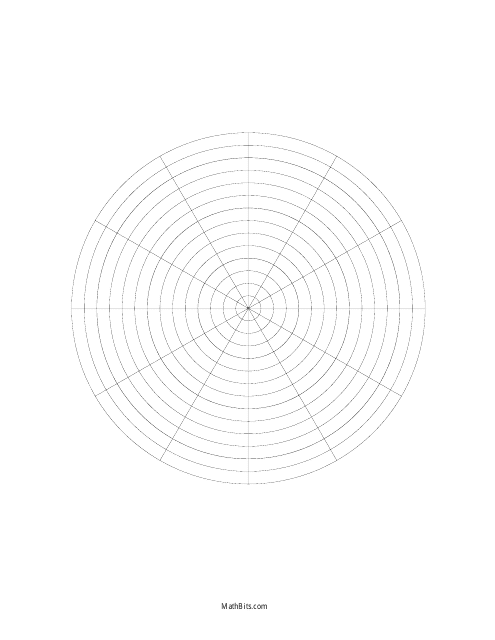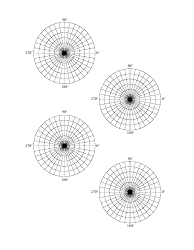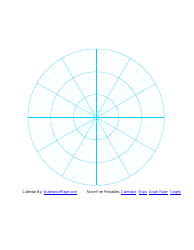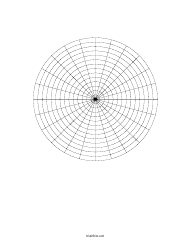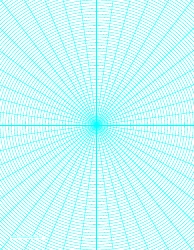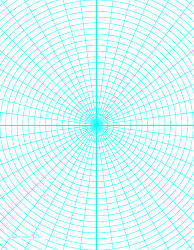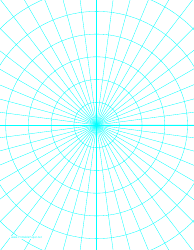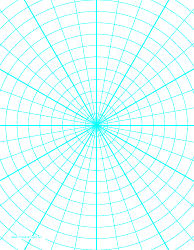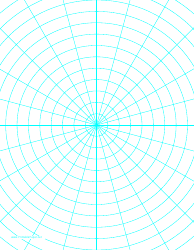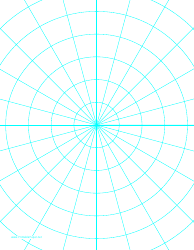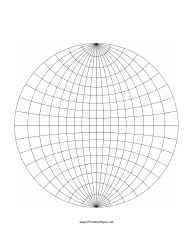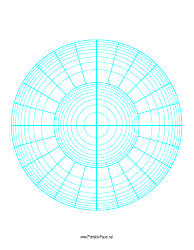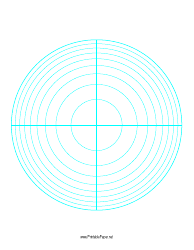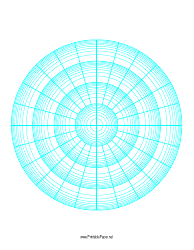One Full Page Polar Graph Paper
One Full Page Polar Graph Paper is used primarily in mathematics, particularly in the fields of geometry, pre-calculus and calculus. It is a graphing paper that has concentric circles and radial lines – like a dartboard. This layout allows for graphing equations in polar coordinates (where a point is identified by its distance from the origin and its angle from a fixed direction), plotting polar functions, designing circular/spiral objects, and for recording experimental data relating to distance and angle. It can be a great tool for visualizing and analyzing patterns and relationships in polar coordinate systems.
The one full page polar graph paper is typically filed by individuals or organizations dealing with complex mathematics, such as researchers, analysts, engineers, students, or mathematicians. This type of graph paper is specialized for recording polar coordinates or for drawing circularly symmetrical figures often found in trigonometry, pre-calculus and physics. The filing location or system would depend on the person or organization's preferred method of document management. It's important to note that there's no specific country that commonly files this type of document, it's used globally wherever these subjects are studied or relevant.
FAQ
Q: What is a polar graph paper?
A: A polar graph paper is a type of paper that's designed with concentric circles and radials that are equally spaced. It is typically used to plot graphs in polar coordinates, or functions with circular symmetry.
Q: What is the use of polar graph paper?
A: Polar graph paper is used in mathematics, physics, engineering, and other science disciplines to plot relationships involving polar coordinates. Polar coordinates represent a point in the form of radius and angle from a fixed direction, rather than using x and y axes as in Cartesian coordinates.
Q: What is a full page polar graph paper?
A: A full page polar graph paper is a sheet of polar graph paper that extends across the full space of the page. It allows more space for plotting data or drawing graphs in polar coordinates.
Q: How to use a polar graph paper?
A: To use polar graph paper, you first identify the origin at the center of the circles. You then measure the distance from the origin (which provides the radial coordinate) and the angle measured from a specific direction (usually the positive x-axis). These measurements give you the polar coordinates of a point.
Q: Is polar graph paper used in high school?
A: Yes, polar graph paper can be used in high school, especially in advanced mathematics classes. It is often used to teach students about the concept of polar coordinates and how to plot them.
Q: What size is a full page polar graph paper?
A: Full page polar graph paper typically follows standard paper sizes. In the U.S and Canada, it is usually 8.5 by 11 inches (Letter size), whereas in India and Australia, it generally follows A4 size, which is approximately 8.27 by 11.69 inches.
Q: What is the difference between polar graph paper and cartesian graph paper?
A: The main difference between these two lies in their coordinate systems. Cartesian graph paper is designed for Cartesian coordinates which are plotted on a plane with two axes, the x and y. Polar graph paper, on the other hand, is designed for polar coordinates where points are plotted based on their distance from a central point and an angle.
